|
London docks
A photo study of London's docklands, 1980s
(Photos ©urban75, 6th February 2010)
London's been a major port since Roman times, growing in importance after the Industrial Revolution and the development of the Empire.
The docks have helped London become one of the greatest trading cities in the world, and created its cosmopolitan nature with
waves of Jewish immigrants arriving in 1653, French Protestant Huguenot silk weavers in 1685, followed by Jewish settlers from Poland, Romania and Russia between 1870 and 1914.
By the mid 19th century, growing Empire traffic led to the construction of a series of Royal Docks downstream. The first, the Royal Victoria dock, was opened in 1855 with The Royal Albert dock following in 1880. The last of the Royal Docks to be built was the King George V dock, opened in 1921.
The growth of large container ships led to companies deciding to use other ports such as Tilbury and Felixstowe, situated closer to the sea and not crowded by poor roads and a large city.
During the late 1960s and early 1970s, the docks along the River Thames - including the Royal Docks - closed with the loss of thousands of jobs.
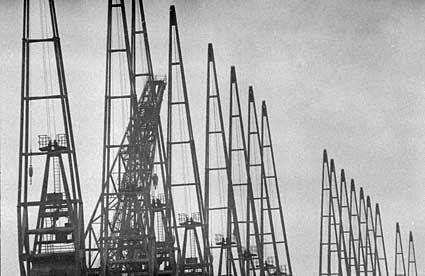
The establishment of the London Docklands Development Corporation - fiercely opposed by local boroughs, Tower Hamlets, Newham and South - in 1981 kick-started an immense program of regeneration in the area.
The area now hosts the Manhattan-esque Canary Wharf office development, new housing, London City Airport, the university of East London and an international exhibition centre.
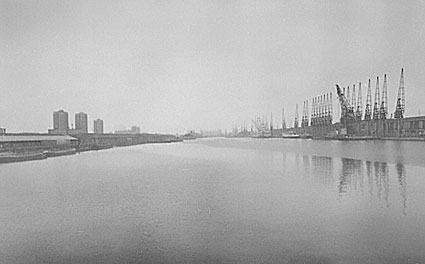
These photos were taken during a lone bicycle trip around the docks in 1980 on a grey Winter afternoon.
The area was completely deserted and I was able to whistle my cheery way straight through the middle of huge, abandoned warehouses that seemed to stretch on for miles.
I don't think there's anything recognisable now remaining from these pictures.
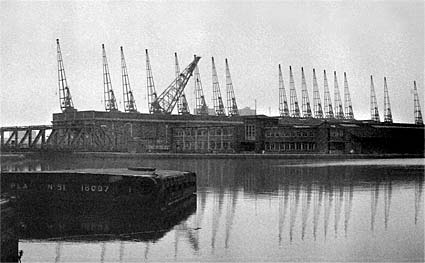

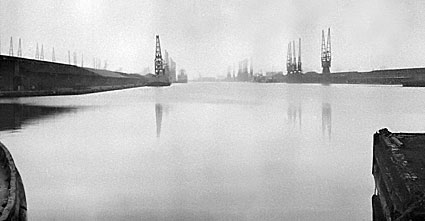
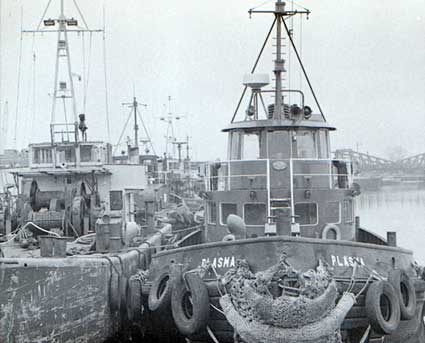

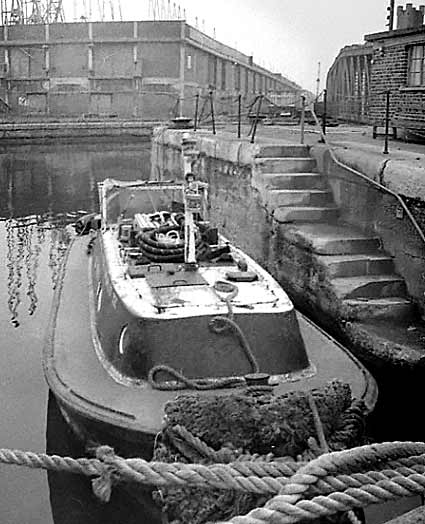

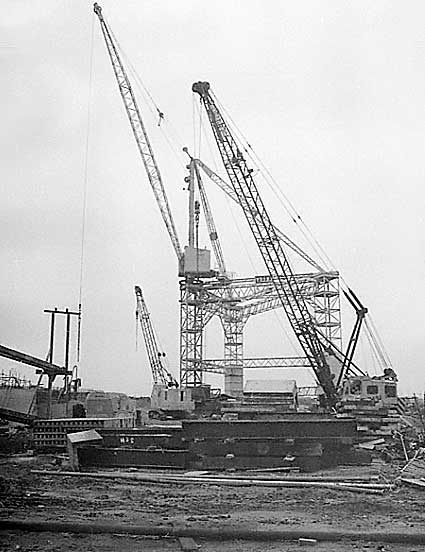
If anyone's interested, I shot the photos on Ilford HP5 400ASA film using an Olympus OM10 camera and standard lens. I'd splashed out for the all-important 'manual adapter' which meant that I could set manual exposures on the camera (not that I had much of an idea what I was doing at the time).
I'd saved up for ages to buy the camera, working in this dreadful place for what felt like an eternity.
I was keen to develop and print my own photos but, sadly, living in a hideous dump in East Ham that was infested with mice, fleas and ne'er before seen 'furniture mite' beasties meant that the place was awash with dust and crawling bugs.
Add to that my pathological fear of the 'changing bag' (where you had to transfer the exposed film onto a reel and then drop it into the developing tank - in pitch blackness) and you may forgive the less-than-perfect quality of some of these shots.
» A walk through the old docklands, Feb 2006
|